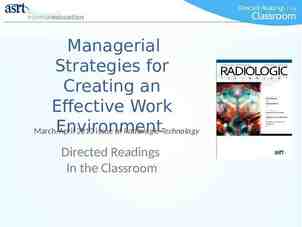Assessment for learning by design: Rubrics and assessment
10 Slides470.02 KB
Assessment for learning by design: Rubrics and assessment A conversation starter What happens when it goes wrong. A personal story
What we want to achieve: What they are and could be Examine rubrics critically 2 types: Holistic vs analytical Introduce an new idea as a provocation toward a new approach
What a rubric needs to do . Separate standards of work Communicate standards of work Really should be developed alongside Course Objectives at the Course Design stage .
But.When used as a learning tool Focus students in on what is REALLY important You could . give it to students INSTEAD of the assessment and ask them what the assessment would be and what was important Attempt to create a shared understanding Higher achieving students and Less awkward conversations “why did I get this?”
Analytic vs Holistic rubrics A holistic rubric requires the teacher to score the overall process or product as a whole, without judging the component parts separately (Nitko, 2001). In contrast, with an analytic rubric, the teacher scores separate, individual parts of the product or performance first, then sums the individual scores to obtain a total score (Moskal, 2000; Nitko, 2001). Holistic rubrics are customarily utilized when errors in some part of the process can be tolerated provided the overall quality is high (Chase, 1999). Nitko (2001) further states that use of holistic rubrics is probably more appropriate when performance tasks require students to create some sort of response and where there is no definitive correct answer http://pareonline.net/getvn.asp?v 7&n 25 Analytic rubrics are usually preferred when a fairly focused type of response is required (Nitko, 2001); that is, for performance tasks in which there may be one or two acceptable responses and creativity is not an essential feature of the students' responses. Furthermore, analytic rubrics result initially in several scores, followed by a summed total scoretheir use represents assessment on a multidimensional level (Mertler, 2001)
Step 1: of writing rubrics What is the BIG idea of your assessment piece? Think .1 minute .crystal clarity Explain to the person next to you Re think and write it down .5 mins
Step 2: what are the objectives that relate to your assessment? .do these ‘fit with your “big” purpose Or is there a problem?
Step 3: P1.what is it .look to that verb, All yours .
Education literature needs you to be critical Everything is ‘best practice’, they use different terms to say the same thing and nothing seems consistent Bog standard example















